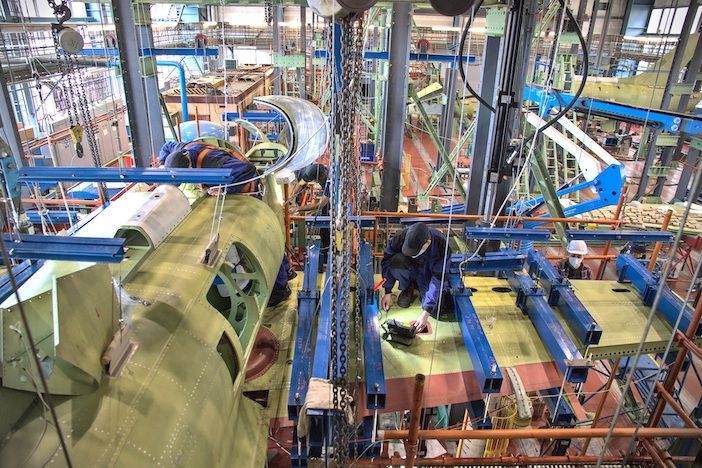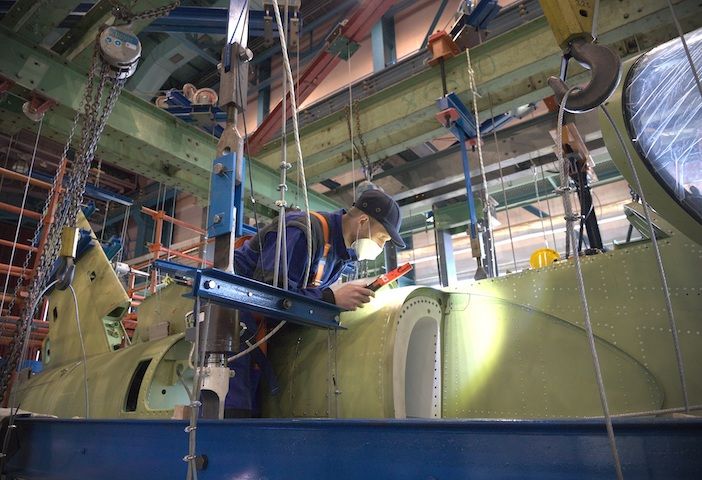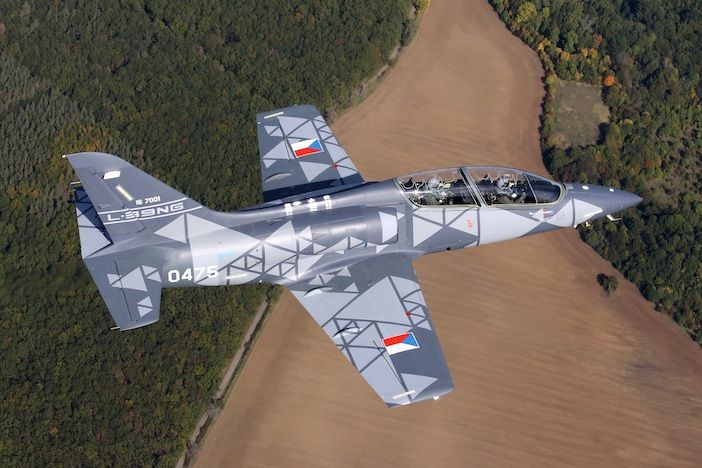Engineers at the Czech Aerospace Research Centre in Prague have successfully completed a third phase of fatigue testing on the next generation L-39 fighter jet, proving its operational lifespan will exceed that of its predecessor’s.
The L-39NG (next generation) is made by the Czech manufacturer Aero Vodochody and is used for light attack and / or pilot training for fourth and fifth generation fighter aircraft. The L-39NG, which received its type certificate in September 2020, is powered by the FJ44-4M engine and features optimized aerodynamics and materials, modern avionics, five hard-points for weapons and is compatible with a range of simulation technologies.
The L-39 Albatros has been upgraded several times with a number of variants since its introduction in 1972. Around 2,900 L-39s have been built and served with over 30 air forces around the world, with the latest version, the L-39NG, launched in 2014.
The fatigue test of the L-39 NGat the Czech Aerospace Research Centre (VZLÚ) started on May 25, 2020 and is scheduled to last for two years. Aero Vodochody has already completed two life cycles of ground fatigue testing on the prototype with manufacturing serial number 7003 to obtain type certification.
These first two cycles of fatigue testing, which subjected the prototype to loading compared to 10,000 flight hours, were completed on time and with the necessary proof of test parameters and results in cooperation with VZLÚ.
The recent completion of the third life cycle ground test confirms that the lifespan of the new aircraft will be significantly longer than of its predecessor. The fourth fatigue life cycle of the L-39NG is now starting, and the entire fatigue test is scheduled to be completed by April 2022.
According to design analyses, the L-39NG aircraft should have three times longer lifespan than the original Albatros. Depending on the way the aircraft is used, the service life of the L-39NG is up to 15,000 flight hours.



Vojtěch Labuda, L-39NG project manager at Aero Vodochody said, “The complete L-39NG fatigue test is going to run a total of five life cycles. One fatigue life cycle on the ground test corresponds with 5,000 flight hours.
“We have now successfully completed the third life cycle, which confirms that we will achieve our goal to significantly extend the service life of the new generation of the aircraft, and this is great news for future L-39NG users.”
David Novotný, test engineer at VZLÚ said, “The design of the L-39NG airframe shows exceptional resistance to cyclic loading, despite the relatively hard fatigue spectrum we are using in those tests. A detailed inspection confirmed only minor and expected failures on the airframe structure even after the end of 15,000 simulated flight hours.
“No suspicion of any incipient failure was indicated at any spot on the primary airframe structure. The integral wing fuel tank is still filled with fuel substitution and there was no leakage of the liquid from the wing structure throughout the test.”





